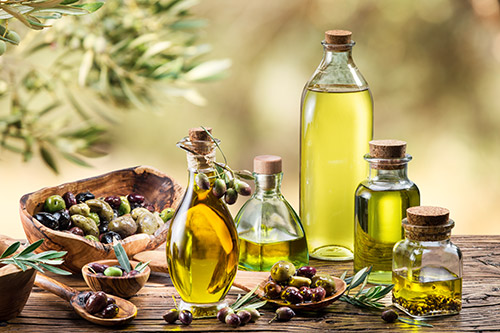In our tour of producers and gastronomy of authentic Corsican terroirs and traditions, olive oil is an essential ingredient of Mediterranean cuisine. With more than 640 hectares of olive groves classified AOP, nearly 300 communes scattered in Upper Corsica and Southern Corsica and 140,000 liters produced per year, olive growing is doing well in Corsica. It has always been one of the great riches of the island of beauty despite the wars which greatly destroyed the land.
Corsican olive growing restored its image in the 1980s thanks to enthusiasts who did not hesitate to renovate the old olive groves. A work well rewarded by obtaining AOP for their olive oil produced, transformed and elaborated in Corsica.
Corsican Olive oil: 3000 years of history
Corsican olive groves represent 3000 years of history that can be found today in the different terroirs and cultures of the island of beauty. ! Taking advantage of a variety of earth types and olives offering a vast palette of aromas, the factor that unites them is this typically Corsican smooth and velvety oil.
The quality of its production is verified with the official AOP / AOC sign, which offers the following guarantees: production in Corsica with local varieties and according to ancestral know-how. The cultivation methods are recent and respect the environment.
The different varieties of Corsican olive trees
Whether in Upper Corsica or southern Corsica, olive fields extend over almost the entire territory, covering up to 2000 hectares! With its particular relief, there are 6 varieties of olive oil. There are varieties endemic to the island of beauty: Sabina, Curtinese, Zinzala and Capanacce, Ghjermana and Alva Nera.
To recognize it, Corsican olive oil has a velvety shine associated with a moderate degree of bitter spiciness. It has a complex and round aroma, coming from the late harvest of ripe olives. As the olives stay on the tree longer, the fruit has more time to absorb the scents of its environment – flowers, Corsican scrub and rosemary…


